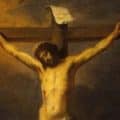
“The Wasteland,” arguably T.S. Eliot’s greatest poem, was originally published in 1922, 100 years ago last year. But this month marks another important centenary anniversary of the publication of Eliot’s great reflection and critique of modernity. In September 1923, Leonard and Virginia Woolf published an edition of “The Wasteland” for their private publication company, Hogarth Press. Virginia Woolf personally designed the layout of the Hogarth edition, reflecting her graphic interpretation of the substance of the great poem. Thus, two artists whom many regard as the personifications of modernist literature — Woolf for prose fiction; Eliot for poetry — combined to produce a volume that is a work of art in itself. In an age in which we sometimes read more on an electronic device than in an object of paper, glue, and cardboard, the 100th anniversary of the Hogarth edition of “The Wasteland” is an occasion to reprise the celebration of Eliot’s great work.
I have long considered “The Wasteland” to be the poetic inspiration of such novels as Ernest Hemingway’s “The Sun Also Rises,” Evelyn Waugh’s “Vile Bodies” (among others), Erich Maria Remarque’s “All Quiet on the Western Front,” Woolf’s “To the Lighthouse,” and similar between-the-wars novels. Each of these works of literature are portraits of the disillusion and unmoored debauchery of post-World War II Europe. They are not celebrations of what the modern has wrought, but rather observations of the disaster and diagnosis of what it portends. All are “modernist” works, but only in the sense that the modern ought to make us shudder in anxious perplexity. We have lost our way, they all seem to say, and we haven’t the foggiest idea of how to find it again. Written before any of these novels, “The Wasteland” might be seen as the blueprint for all of them.
Indeed, Waugh used a line from “The Wasteland” as the title of another of his novels from that period, “A Handful of Dust.” If you know the novel, you can see how it was inspired by these lines from Eliot:
You cannot say, or guess, for you know only
A heap of broken images, where the sun beats,
And the dead tree gives no shelter, the cricket no relief,
And the dry stone no sound of water. Only
There is shadow under this red rock,
(Come in under the shadow of this red rock),
And I will show you something different from either
Your shadow at morning striding behind you
Or your shadow at evening rising to meet you;
I will show you fear in a handful of dust.
And in Waugh’s most famous (if not his best) novel, Brideshead Revisited, the stuttering character Anthony Blanche delivers from memory a passage from “The Wasteland,” at the window of lodgings at Oxford, in order to scandalize the earnest undergraduates passing by in the quad:
“‘[I]n languishing tones [Anthony] recited passages from “The Wasteland” to the sweatered and muffled throng that was on its way to the river.
‘I, Tiresias, have foresuffered all,’ he sobbed to them from the Venetian arches; “Enacted on this same d-divan or b-bed,/I who have sat by Thebes below the wall/And walked among the l-l-lowest of the dead…”
“The Wasteland” is not merely a great example of modernist poetry. It is, rather, an image of the human race as it has wandered ever further from the Edenic paradise that is its proper home. The desolation and ruin of the poem is a cry of desperation. It is not simply a glimpse into the abyss, but rather a guided tour through it. It is Eliot’s Inferno without Paradiso.
‘That corpse you planted last year in your garden,
‘Has it begun to sprout? Will it bloom this year?
‘Or has the sudden frost disturbed its bed?
‘Oh keep the Dog far hence, that’s friend to men,
‘Or with his nails he’ll dig it up again!
‘You! hypocrite lecteur! — mon semblable, — mon frère!”
But perhaps the poem was also Eliot’s dark night of the soul that led to the dawn of resurrection. Some five years after the publication of “The Wasteland,” and to the mocking chagrin of none other than Virginia Woolf, Eliot left the empty, arid Unitarianism of his ancestry and converted to the florid liturgical tradition of Anglo-Catholicism. In the wasteland, there
“… is no water but only rock
Rock and no water and the sandy road
The road winding above among the mountains
Which are mountains of rock without water
If there were water we should stop and drink
Amongst the rock one cannot stop or think
Sweat is dry and feet are in the sand
If there were only water amongst the rock…”
In Christianity, he found the water.
Eliot’s conversion makes “The Wasteland” more, not less important. For it demonstrates that he did not embrace the death and decay of the world of the poem, but rather was on his journey out from it to the glory of resurrection. Despite Woolf’s dismissal of Eliot’s conversion, her edition of “The Wasteland” is a lasting contribution to Christian art.
Kenneth Craycraft is an associate professor of moral theology at Mount St. Mary’s Seminary and School of Theology in Cincinnati.




